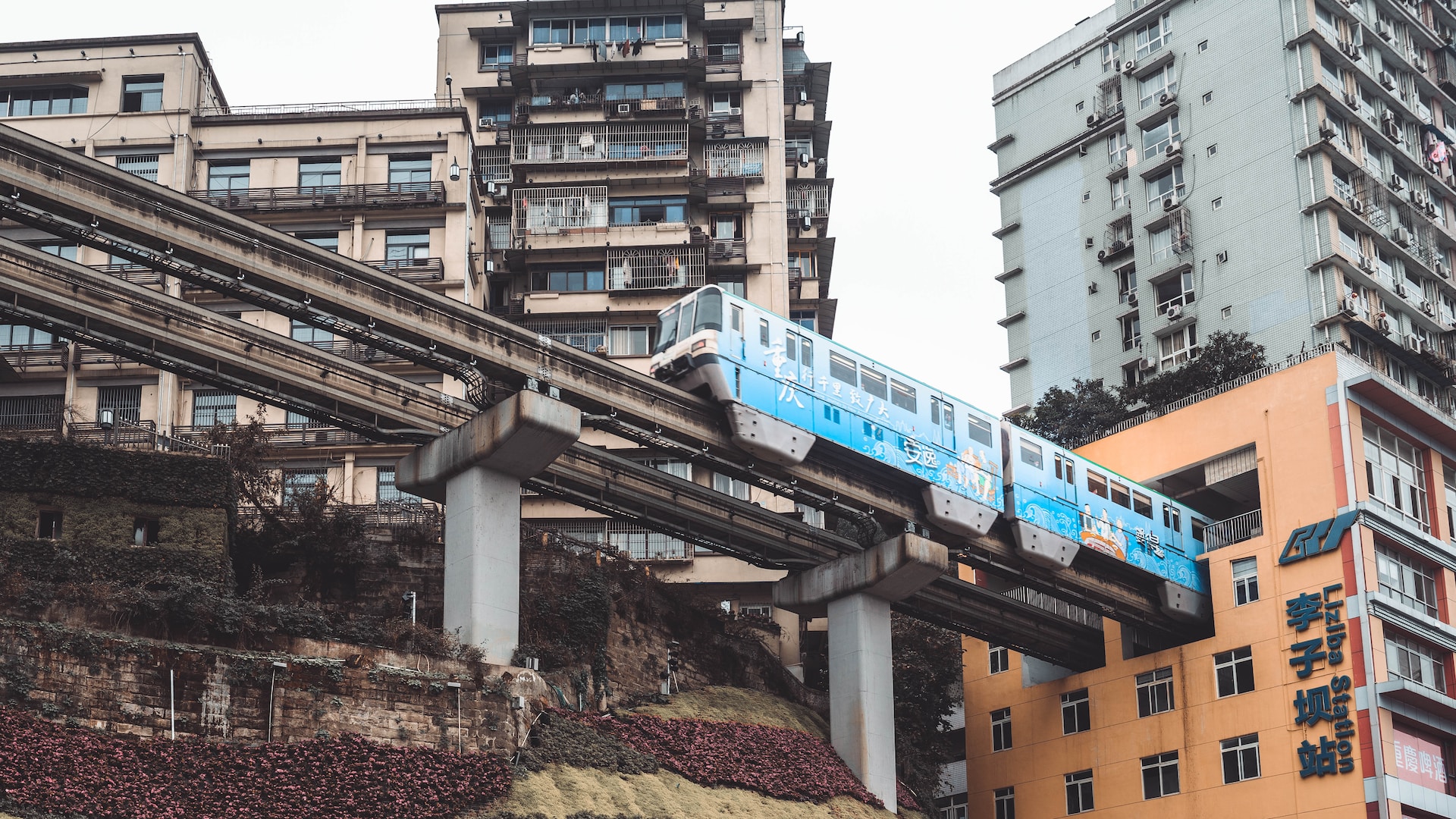Author | M. Martínez Euklidiadas
The megacity of Chongqing (重庆, Chóngqìng) is the largest city in the world by population. In its center, residents are stacked in skyscrapers like beehives, some of which are so compact that residents can even chat with their neighbors in the apartment in front without even shouting.
The city of Chongqing is known globally because its Transit 2 subway line passes through an apartment building, where the Liziba station (李子坝, Lǐzǐ bà) is actually located, a building that was designed and built this way due to the lack of space.
Chongqing, the world’s most populous city
Chongqing is the largest city in the world by population when measured in terms of municipality, although it is in third place if it is measured in terms of metropolitan area, just behind Tokyo (39 million people) and Jakarta (34.5). Although it is a matter of terminology and geopolitical considerations, because, technically, Chongqing is an arbitrary demarcation accepted in 1997 with a view to greater growth of ‘the’ inland city.
In fact, with more than 32 million inhabitants distributed over 82,400 m^2^, it is a relatively low density city (390 inhabitants per /km^2^), close to the density of 300 inhabitants per /km^2,^ which is the degree of urbanization considered’ rural’ by the UN. A realistic way of looking at the city of Chongqing is like a series of villages within the same municipal demarcation.In this regard, the city of Chongqing could almost be considered a very large town or disproportionate sprawl, when in practice the majority of the population lives in an apartment within a tiny fraction of its territory.
Giant towers without sun exposure

Residents of this city tend to live in apartments and many in rather high ones. The city of Chongqing is known for its enormous buildings with housing (upper levels) and offices or services (lower level), which often do not allow any sunlight into the areas shaded by the buildings.

Unsurprisingly, some countries see this **urban atmosphere as oppressive or dystopian** and, functionalism apart, excessively contrived in the way in which Le Corbusier saw housing. Although it is not the only form of urbanism in Chongqing, the Chinese urban expansion at the end of the 19th century led to a form of urban development that seems to lack oxygen.

An ancient and now industrial city, away from the sea
There are four cities directly under the central jurisdiction of the People’s Republic of China. Peking, Shanghai, Tianjin and Chongqing, with the latter being the only one of these cities that is not close to the sea and also the largest by population.
The image does not show the sea, but rather the confluence of the Yangtze and Jialing Rivers next to the city’s financial center. The Chongqing Grand Theatre on the right, is built in the form of a tribute to the city’s industrial past.

But the center of the city, declared as such in April ’97, dates back to at least the 11th century BC, and it has had some form of population since the Stone Age, around 20 thousand years ago.
The name of the city dates back to the end of the 11th century BC, when the Emperor Guangzong christened it as "important/major (重) celebration (庆)", although its moment of triumph was as the provisional capital of China during the Second Sino-Japanese War (1937-1946); followed by the Civil War (1946-1949).
If the first war transferred a major part of China’s industry to the region, the second ended up strengthening it. Today, Chongqing is known for its manufacturing industry, with a focus on steel, for which is known worldwide. In China, it is also known for manufacturing cars, machinery and chemicals.
Explosive growth

Chongqing has gone, in just one generation, from being a small network of rural municipalities to become the world’s city (New York was the first, Chongqing will be the future one). It has achieved this in numerous phases and different urban designs, although the struggles of growth and density have not prevented it from repeating some of the problems experienced by cities that grew during the mid-20th century.
Municipal efforts to contain pollution have often been futile after the deployment of an infrastructure that does not function any other way. As was the case in other rapid growth cities, peri-urban and peripheral highways have often become enclosed in a growing Chongqing, leaving behind striking images of highways as tall as skyscrapers.

When Chongqing connected to the rest of China
Despite its industry, Chongqing did not join China’s high speed network (200 km/h) until 2015, when it connected with Chengdu in the west. A year later it did so with Wanzhou in the east and, in 2017, a winding route allowed the population to get to Xi’an by going around Chengdu.
Chongqing is in the middle of China, but in a way it was notably isolated. The lines connecting the city with Zunyi in the south, Wuhan in the east or Xi’an in the north (now almost high speed) are not even ten years old.
Is Chongqing the spiciest region in the world?
An interesting fact is that, although it has been separated from Sichuan since 1997, Chongqing likes its spices as much as in the surrounding cities. Chongqing is famous for the use of the "Sichuan peppercorn", a spice that even Mexicans find hot. This ingredient is known for its heat that creeps up on you and it is among the spiciest ingredients available, packing the local cuisine with flavor.
Images | Max Zhang, Xinxu Tang, Dongsh, Vincent Lin, 李大毛 没有猫, Zhang qc, Sasha Kaunas






















































